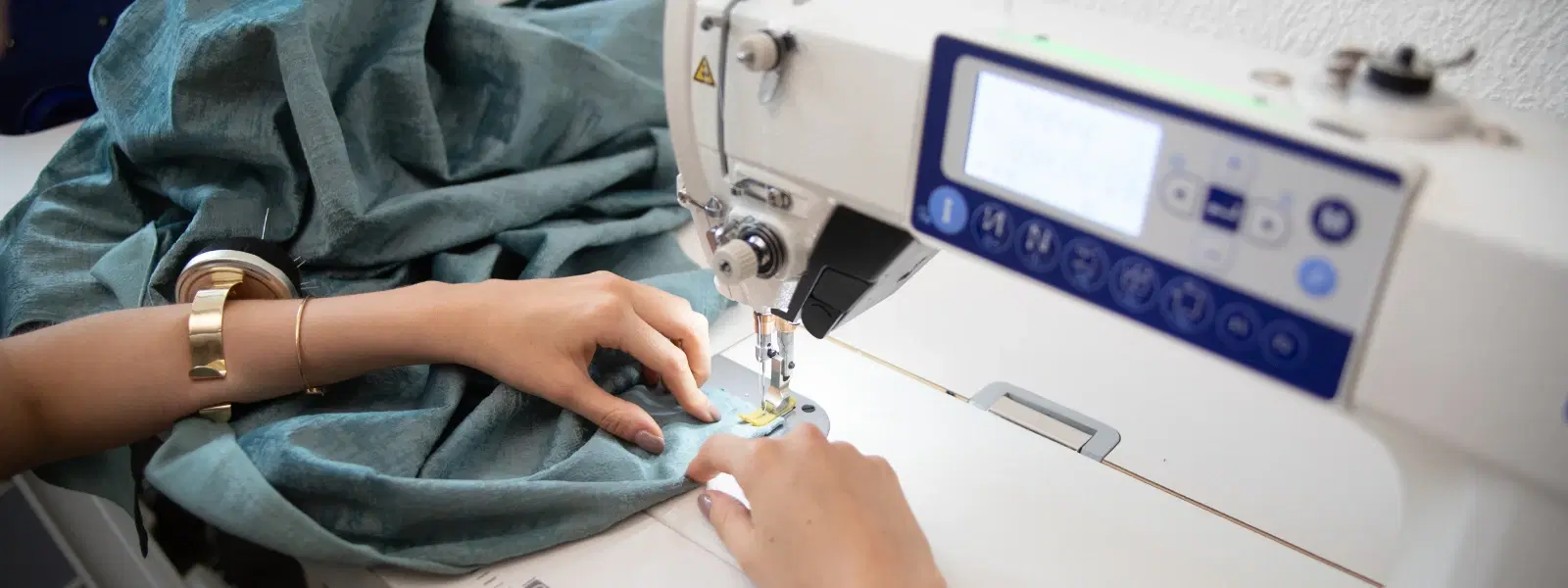
Apparel & Accessories
•03 min read
-68be3552-55c1-4572-9cbe-6f32de66a775.png&w=3840&q=75)
Cotton fabric has always been a symbol of comfort and style, deeply woven into histories of sustainable fashion. Have you ever wondered how to make cotton fabric at home? In this guide, we will walk you through the cotton fabric production process, revealing the steps to weave cotton fabric and uncovering natural cotton fabric creation techniques that are both creative and responsible. Read on to learn how you can transform raw cotton into beautiful cotton fabric for clothing right at your home.
Your journey begins by sourcing raw cotton. When cultivating cotton, ensure the plants are in full bloom and the bolls are perfectly fluffy before harvesting. Remove the seeds carefully using manual methods or a simple hand-ginning tool. Keep in mind that selecting the right variety is key. Understanding cotton varieties such as upland, Egyptian, or organic cotton will influence the softness and durability of your fabric. This step sets the foundation for making cotton fabric at home and is critical to achieving an authentic, Made in India experience.
After harvesting, it's essential to clean the cotton. Gently wash the fibers to remove dirt and impurities without damaging their natural properties. Once cleaned, the next step is carding. Carding aligns the cotton fibers, forming a uniform, fluffy sheet that prepares the fibers for spinning. Using a hand carder or a small carding machine helps improve the texture and strength of the final fabric. By following these cotton fabric manufacturing techniques, you maintain the integrity of the fibers, setting the stage for a smooth spinning process.
Spinning is where the magic of natural cotton fabric creation truly begins. Using a spinning wheel or drop spindle, twist the carded fibers into a continuous thread. Adjusting the thickness and twist of the yarn is vital depending on the type of cotton fabric for apparel you wish to design. A delicate balance here can yield yarns perfect for various weaves and patterns, ensuring that the final fabric embodies both style and quality. Your hands-on experience in spinning deepens your connection to sustainable fashion practices and enhances your creative expression.
Prepare a simple handloom or frame loom to start weaving. Setting up the loom involves spacing the warp threads evenly to create a sturdy base. Once your loom is set, intertwine the weft threads with the warp in innovative cotton fabric weaving patterns such as plain, twill, or satin weaves. Experimenting with different patterns lets you achieve unique textures and elevates the artistic appeal of your fabric. This phase highlights your journey into creative, on trend fashion that resonates with a modern, style-savvy approach.
-b4b0ee01-7102-4782-b4cc-72450eaeb58c.png&w=3840&q=75)
Expert Tip: Enhance Your Weaving Experience
While weaving, maintain a regular rhythm and focus on uniform tension. This method not only ensures the fabric's durability but also brings out refined details in your design.
Once you have woven your fabric, the process continues with scouring to remove natural oils and impurities. This gentle cleaning is a crucial preparation for dyeing. With a careful selection between natural and synthetic dyes, follow tried cotton fabric dyeing methods to bring vibrant life to your fabric. Organic materials like indigo or turmeric provide eco-friendly color options that align with cotton fabric sustainability in fashion. After dyeing, finish your fabric by rinsing and ironing it to smooth out wrinkles. A finishing agent can also be applied to give your fabric a soft and refined feel, ensuring your material is ready for creating stylish apparel.
The final touch is transforming your finished cotton fabric into wearable art. Seamlessly cut, sew, and design your clothing pieces, be it shirts, dresses, or scarves. Experiment with different types of cotton fabric for apparel, where each design can reflect personal expression and authenticity. This creative process is not just about making clothes; it is about embracing a lifestyle that is vibrant and sustainable, echoing Tata Neu's focus on curated collections, aspiration, and convenient access to fashion that is both responsible and innovative. Each step you take in creating your apparel mirrors the journey toward a unique, sustainable style experience.
Cotton fabric is made from natural cotton fibers, harvested from the cotton plant's bolls. The production process may include cleaning, carding, spinning, and finishing steps.
-961388ae-2e6f-4656-ab76-3780ab6a42c4.png&w=3840&q=75)
The process has several steps: harvesting, cleaning, carding, spinning, setting up the loom, weaving, scouring, dyeing, finishing, and finally, creating apparel.
Yes, with the right tools and techniques such as hand carding, spinning wheel, and a simple loom, you can start making cotton fabric at home.
Natural cotton fabric is breathable, soft, and eco-friendly, promoting responsible fashion and sustainability in every step.
Common weaving patterns include plain weave, twill, and satin weave, each offering a distinct texture and look ideal for various apparel types.
The journey of creating cotton fabric for apparel at home is both inspiring and rewarding. By following these 10 steps—from harvesting and cleaning to spinning, weaving, and finally finishing—you not only engage in a creative process but also embrace sustainable fashion practices. This guide encapsulates the essence of making cotton fabric at home, empowering you to explore innovative techniques and express your unique style. Enjoy the art of transforming simple raw materials into something extraordinary, reflective of a modern, aspirational, and responsible fashion mindset.